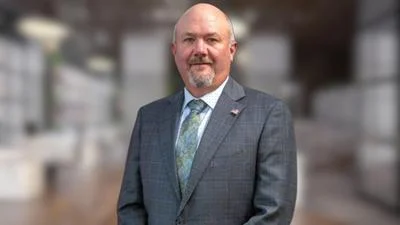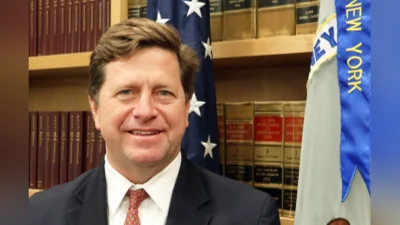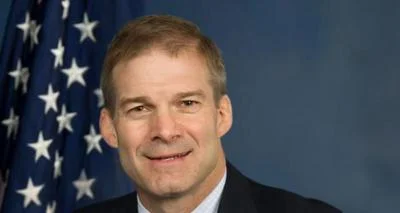The Congressional Record is a unique source of public documentation. It started in 1873, documenting nearly all the major and minor policies being discussed and debated.
“MENTAL HEALTH AWARENESS WEEK 2003” mentioning the U.S. Dept. of Justice was published in the Extensions of Remarks section on pages E1961-E1962 on Oct. 2, 2003.
The publication is reproduced in full below:
MENTAL HEALTH AWARENESS WEEK 2003
______
HON. DANNY K. DAVIS
of illinois
in the house of representatives
Thursday, October 2, 2003
Mr. DAVIS of Illinois. Mr. Speaker, I rise today in honor of Mental Health Awareness Week. With the Census Bureau reporting yesterday that the number of people without health insurance shot up last year by 2.4 million, the largest increase in a decade, raising the total to 43.6 million, showing there is no hiding that our Nation is facing a health crisis. The reason behind this remarkable increase has been blamed on soaring health costs and many workers losing coverage provided by their employers. Although it is usually a misconception that those who are uninsured are also unemployed, the number of full-time workers without health insurance rose by 897,000 last year, to 19.9 million. Among people living in poverty, 49 percent of those worked full-time were uninsured. Beside a lack of information and education about mental illness, being uninsured plays a significant role on whether an individual reaches out for help or even receives treatment.
In our Nation, one percent of the population has been diagnosed with schizophrenia, one percent has been diagnosed with manic depression and between 5-10 percent of Americans will experience at least one episode of major depression. This gives us a base number of about 14-24 million individuals. If you add in the millions who suffer with panic attacks or Obsessive-Compulsive Disorder, and include the more than four million who suffer with dementing illnesses, such as Alzheimer's Disease. Then if we include substance abuse and other addictive disorders, we reach a number that includes a quarter to a third of the American public who suffers with some form of mental illness. During any one year period, up to 50 million Americans, more than 22 percent, will suffer from a clearly diagnosable mental disorder. These numbers demonstrate the need for mental health care and coverage. Yet, instead, services are disappearing and many, specifically minorities, are backing away from the services that still remain.
Minorities in America face severe economic, cultural, linguistic and physical barriers for treatment of mental illness. According to a report from the U.S. Public Health Service, these difficulties prevent thousands from being properly treated. The study explains that minorities are no more likely than whites to suffer from mental illnesses. However factors often keep African Americans, Hispanics, American Indians, Native Hawaiians, and Asian Americans from getting the help they need and when they do, the treatment may be substandard or too late.
For Asian Americans, studies have shown that they underutilize mental health services much more than other populations. The National Research Center found that Asians were underrepresented in the outpatient system, and they were more likely than African Americans, Whites, and Hispanics to have psychotic disorders. Although overall rates of mental illness among Hispanics roughly equal that of whites, young Hispanics have higher rates of depression, anxiety disorders, and suicide. The study also found that Hispanics born in the United States are more likely to suffer from mental illness than those born in Mexico or living in Puerto Rico. With African Americans being overrepresented in populations at high risk for developing mental illness--namely, the homeless, prisoners and children in foster care--the need for mental health treatment is generally higher. All three of these particular cultures have stigmas attached to mental illness along with social battles preventing treatment from being obtained. Even research on the mental health of minorities is sparse considering it was only in 1994 when the National Institute of Health started to require that its funded studies include minorities and that studies indicate a subject's race.
The research that does exist is startling. About 25% of African Americans do not have health insurance and many who do are more likely to receive care from a primary health provider rather than a mental health specialist or end up in the emergency room looking for help. As I mentioned, African Americans are over-represented in high-need populations that are particularly at risk for mental illnesses. One population group is the homeless, of which African Americans make up about 40% of the homeless population. Another is the prison population that is comprised of nearly half of all prisoners in State and Federal jurisdictions and almost 40% of juveniles in legal custody are African American. African American children and youth constitute about 45% of children in public foster care and more than half are waiting to be adopted. African Americans are also more likely to be victims of serious violent crime. One study reported that over 25% of African American youth exposed to violence met diagnostic criteria for post-
traumatic stress disorder. When compared to whites who exhibit the same symptoms, African Americans tend to be diagnosed more frequently with schizophrenia and less frequently with affective disorders. In addition, one study found that 27% of blacks compared to 44% of whites receive antidepressant medication. Moreover, the newer SSRI medications that have fewer side effects are prescribed less often to African Americans than to whites. And while the rate of bipolar disorder is the same among African Americans as it is among other Americans, African Americans are less likely to receive a diagnosis and, therefore, treatment for this illness.
One of the high-risk populations that overly effect the African American population, the prison population, is of an extreme concern of mine. This year an estimated 600,000 exoffenders will be reentering communities across the nation. According to the U.S. Department of Justice, about 283,000 people who are incarcerated on any given day in the United States are known to have a mental illness, with almost 550,000 others on probation. The rate of mental illness in the jailed population is four times greater than that in the general population. The Cook County Jail in Chicago has become, by default, the largest psychiatric facility in the state of Illinois. At least 10% of the Facility's 10,000 detainees are on psychiatric medications. Because the jail is overcrowded, prisoners must be released every day, whether they are ready or not, to make room for new arrivals. Unfortunately, our prison system's purpose is social control, not treatment. This means most of the detainees who have a mental illness are released with just a prescription and the address of a mental health facility and receive very little follow-up.
Mr. Speaker, we have made much progress in mental health awareness--
we are talking about it today, which would have been unheard of 15 years ago. But we have so much to do. In our recent budget crisis, states are cutting mental health funding first and not realizing the cost it will be on our society later. Education and breaking down misconceptions that many cultures face need to be improved. We need to ensure that our citizens are receiving the help they need by providing equal mental health services to all.
____________________








